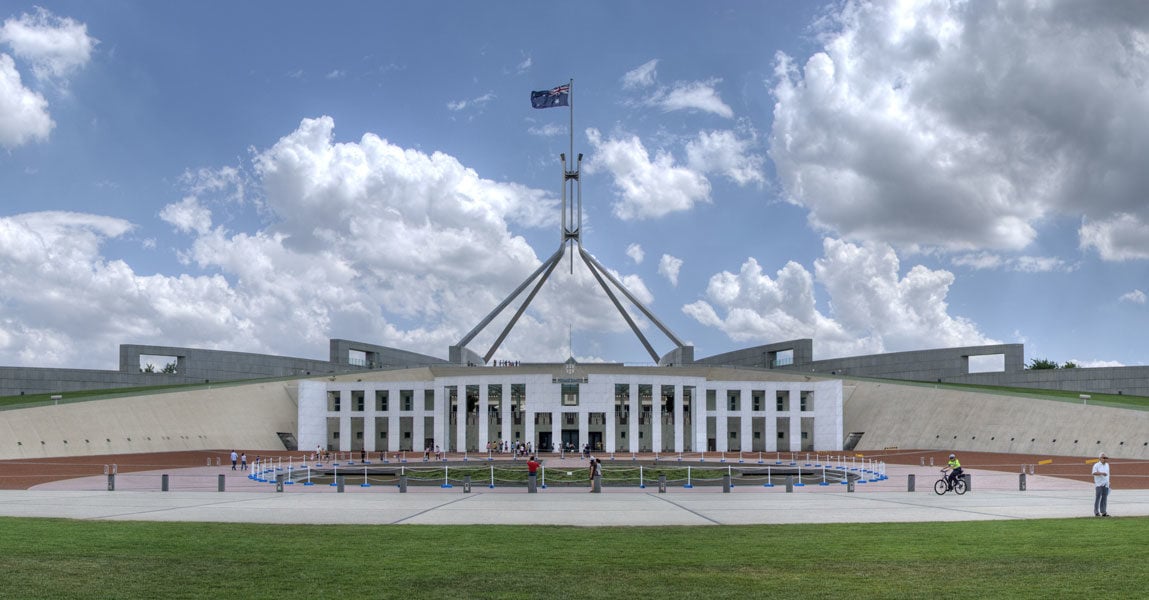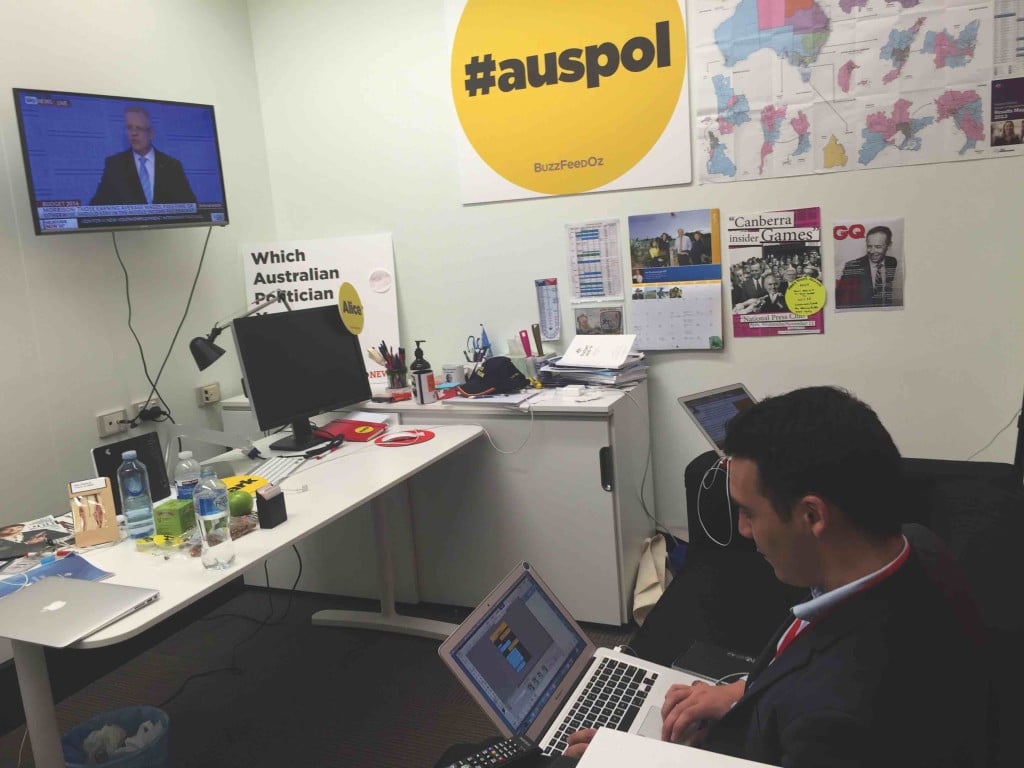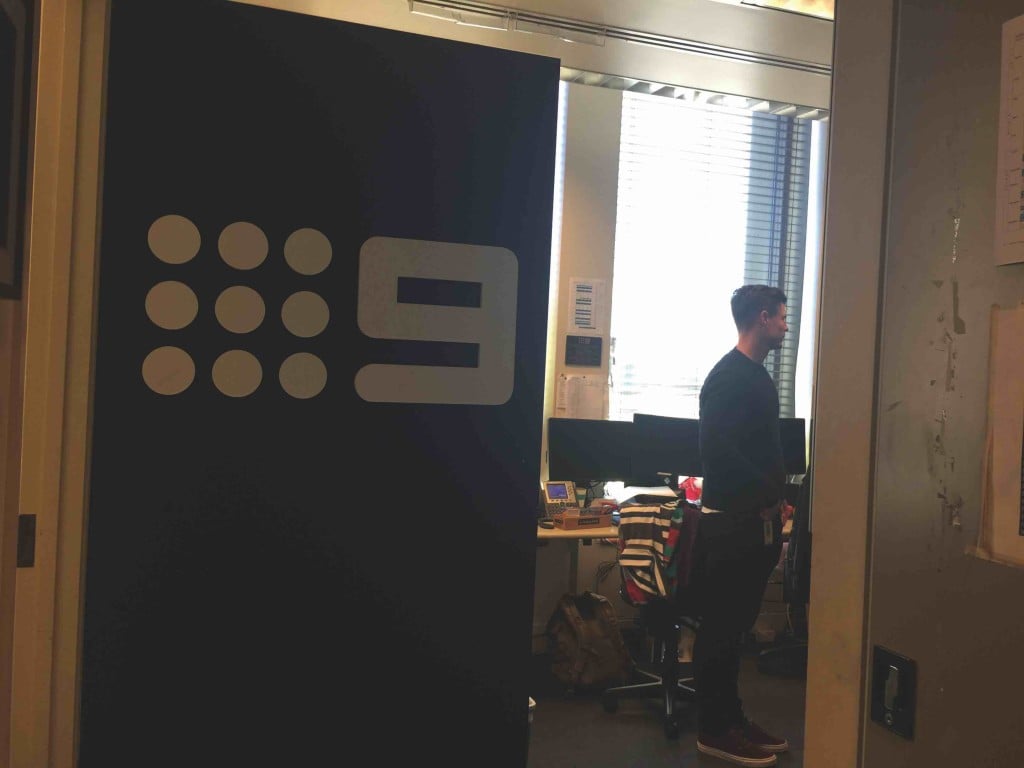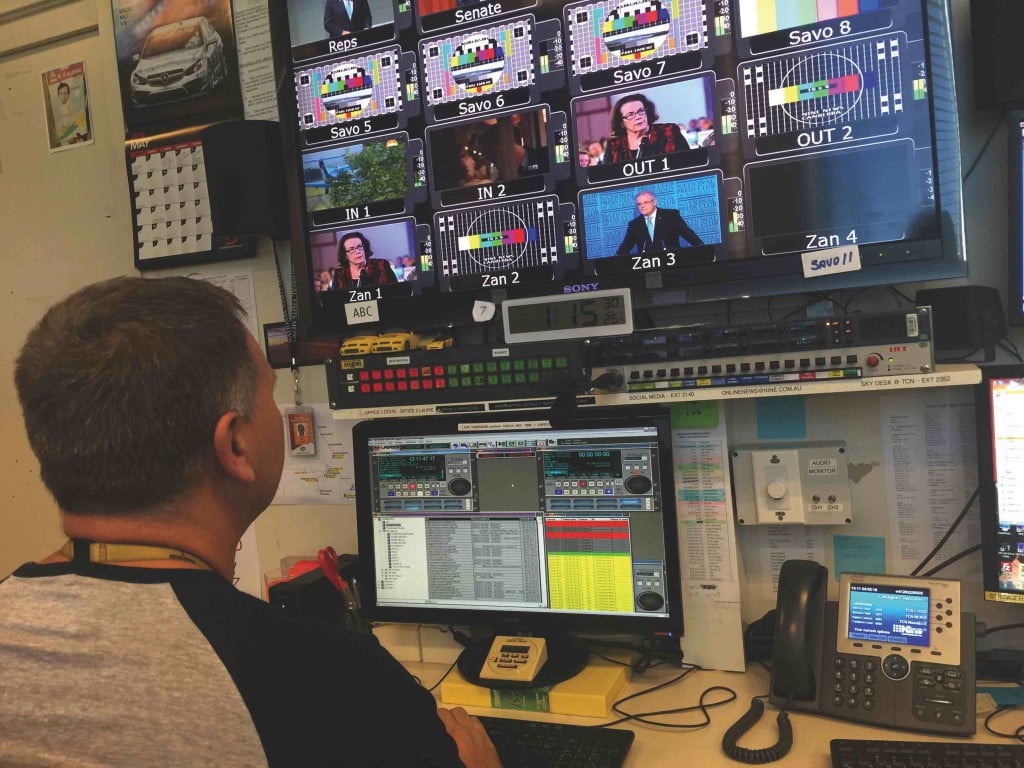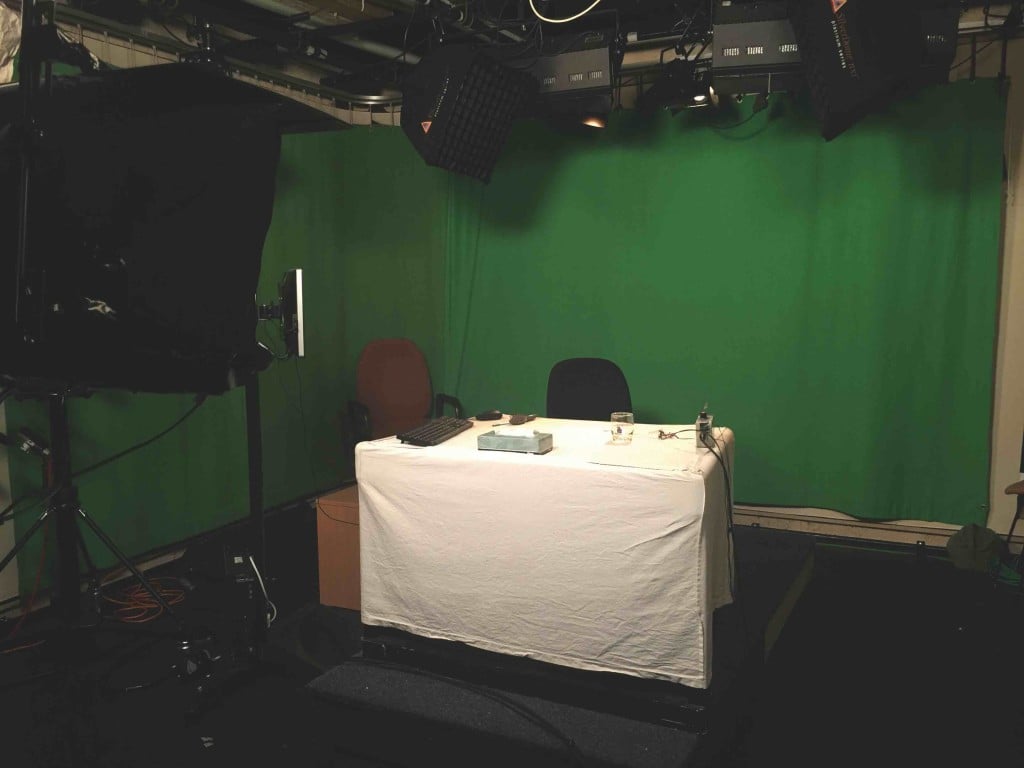The relationship between politicians and the press can be both convivial and contentious – each has an agenda, but they work with one another to ensure transparency of government and policy making. Within Parliament House, Canberra’s press gallery is allocated office space to work in the building itself to report on the political news that impacts the nation.
During the sitting weeks of Parliament, the atmosphere in the press offices can be electric with so much activity and news to report on. This culminates each year with the annual handing down of the federal budget, which sets policy and clarifies the government’s agenda for the year ahead.
Budget Week is a flurry of activity, with a constant flow of media conferences, doorstops, announcements, and interviews taking place.
The day after the 2016 Budget was officially announced, Mediaweek visited the Parliament House offices of Nine and BuzzFeed.
BuzzFeed
“I opened the Canberra office,” explained BuzzFeed political editor Mark Di Steffano on the recent arrival of BuzzFeed into Parliament House. “It took a while for us to get the space because the Press Gallery is… it’s tough real estate to get because it’s very competitive. Once we got a room, we finally moved on hiring Alice Workman, who’s our political reporter. She’s based down here full-time, and I come down here during sitting weeks or other important times.”
The office of BuzzFeed is remarkably modest. Barely 2m x 2m, the room is just large enough to fit a desk and a couch to work from. Even getting this amount of space took some time to arrange.
“For us it took several months going back and forth. The committee themselves were so welcoming and so happy for us to be here. Sky News’ David Speers, Fairfax’s Andrew Meares, and ABC’s Eliza Borrello – the three of them were super supportive. One of the reasons why is because they’ve seen the stuff we’re doing in the US and UK, our reporting around politics. They understand that what we’re doing is straight news reporting. We’re just trying to package it in different ways. When you speak to the journos here, they totally get what we’re doing and are on board with the fact we’re trying to mash up technology and new forms of social media with politics.”
While the annual Budget announcement has a broad impact, for Di Stefano and his colleague Alice Workman, they have a specific youth audience to focus on.
“We knew going in that things around universities, things around the youth jobs program, things around taxes on wine and beer… We know that they’re the sort of issues that we can do break-out stories in. We published 15 stories yesterday once we got out of lock-up. There’s going to be a master story, which is everything in one. And then there’s going to be these little breakout stories about stuff that happens,” Di Stefano explained.
The value of being able to report from inside Parliament House and making contacts locally is not lost on Di Stefano: “I think doing reporting from Sydney is okay, but being here offers us an amazing opportunity to get into people’s offices, to get into press conferences where you can’t normally, developing relationships and sources because people are going to the same bars at night.”
“If you neglect doing local news well, you will fail”
Nine
In a stark comparison to BuzzFeed, long-established Parliament House resident Nine has a much larger space to work within. But considering the resources it requires, the offices are still relatively cramped. On one side of the hallway is an office space with three smaller internal offices for Nine’s team of journalists, while across the hall Nine maintains broadcast facilities with room for a small studio, editing rooms, and a small control room.
Doug Ferguson, who started with Nine in 1979 and has served as Nine’s Parliament House bureau manager for the past eight years, is proud of how nimble and flexible the relatively small production team is.
“Everyone has the skill-base of cameramen, field cameramen, studio cameramen, editor, news exchange, librarian, vision switching, and studio directing. There is an enormous skill-base for all the guys. Obviously there are some that have greater skills in one area as opposed to another.
“The place is too small to have departments. There are 13 of us,” he said with a laugh.
The studio within the Nine office is small, with a simple green screen backdrop. But it is fully operational with camera operators, a director, and vision switchers. Filming from the studio is a relatively simple setup.
“In the past we did two-camera shoots more often because Laurie [Oakes] did his Sunday interviews from in here, but those have become less and less. We did one on Sunday with the Treasurer for the Weekend Today show and the two last night with the Treasurer and Shadow Treasurer,” Ferguson reported.
Nine opened its office in 1988 with the opening of the new Parliament House. The former shared press gallery room is today open to the public in Old Parliament House’s Museum of Australian Democracy. When Nine sought the space in the new building, political reporter Peter Harvey made the request that the Nine office was located away from the other broadcasters. This has proven to be highly beneficial in the years to follow.
“Peter Harvey had the foresight of saying, ‘If all the other TV stations are down that end, we’ll be up this end.’ The advantage of that is we can have scoops and the other end of the corridor doesn’t know anything about it. It has suited our purpose very well. That was a prophetic decision to make that we would be away from them so we can’t hear each other through the walls,” Ferguson revealed.
With an election now set for 2 July, the reporting team is ready for the long campaign ahead, which will take them out of the office. On a normal day, political reporters Lauren Gianoli, Charles Croucher, and Kerrie Yaxley work rotating shifts with the first starting at 4am when they begin news gathering.
“Newspapers are perfect for the Today show shift, but by 6am the newspapers are redundant because, even when it’s not Budget week, the pollies are all doing interviews on the Today show or on radio programs. The papers are a reference, but there’s fresh material within an hour and a half of us being on air,” Gianoli explained.
For the rest of the day, in addition to their own reporting, the reporters are also monitoring Twitter and the radio for interesting political interviews.
“We tend to listen to ABC Radio a lot as they have the interviews with the politicians. We have to keep across those in the morning,” said Yaxley.
When seeking stories, the reporters in Parliament House are all conscious of finding stories and angles that translate outside the walls of the building.
“That’s the big challenge, trying to remind yourself of what’s actually really important. Canberra is a bit of a bubble and you can get swept up,” said Yaxley.
Gianoli agreed: “For television as well, we’re always looking for how it affects our viewers, trying to translate that into something that makes sense.”
